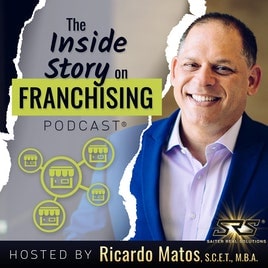8 Signs Your Cold Call Approach is Failing
Thinking of Hiring a Virtual Assistant?
Making cold calls is one of the aspects of telephone sales that might be among the most difficult. The following are some signs that suggest you may need to modify your approach to making calls.
There is a wealth of advice available on the improvement of your cold calling technique; but, just adhering to this advice will not ensure your success. Although most of that advice is useful, the only way to really understand whether your cold call technique is successful is to analyze customer behavior and measure outcomes after any particular series of calls. This is the only way to know for sure if your approach is successful.
However, revenues are not the sole indicator of a business’s level of success. If all you’ve done with a cold call is get another meeting or create trust with a customer, then you can certainly consider it a success. Given that the vast majority of cold calls do not immediately result in sales, it seems a bit unfair to just use this factor as the measuring stick.
But we’re not going to be tallying up our victories here. There are situations when a call strategy isn’t producing the desired results. It might suggest that you need to include some kind of coaching into your weekly meetings, or it could mean that you need a more effective call script. No of the circumstances, it may be difficult to determine whether it is appropriate to evaluate your procedures. The following are some signs that your cold calling strategy isn’t producing the desired results for you.
8 Signs That It’s Time to Switch Up Your Cold Call Strategy (and how to fix it)
- Numbers are too low
The most straightforward sign that your cold calling strategy isn’t working is simply that your numbers aren’t increasing. Even though the “success” rates of cold calling are normally rather low, such metrics typically only take into account the calls that result in sales. Forget about those for a minute. Examine other data, such as the percentage of individuals that pick up when you call, the number of first conversations that lead to follow-up appointments, and the total amount of time spent on cold calls. These data do not guarantee a sale, but they may tell you whether or not your strategy is successful, which is useful information to have even if your business is not doing well financially.
- Not making enough touches
The number of calls you make on a daily basis is another metric that may provide you with useful information on the performance of your cold calling strategy. Every day, a sales representative will make around 33 cold calls, on average (even more with technology like VA FLIX). If you are accomplishing more than that, it is fantastic; but, if you are not, your call technique may be failing simply because you are not making a sufficient number of calls. Set a daily objective for yourself and schedule time in your schedule to conduct cold calls. If for any reason you are unable to meet your goal, you should make every effort to make up for it the next day in order to ensure that your weekly average is a fair number. Keep in mind that a significant portion of making cold calls is a numbers game, and in order to win, you need to ensure that your numbers remain high.
- Giving up too easily
It takes an average of eight cold call efforts to reach a new prospect, so if you’re stopping after only one or two tries, you’ll certainly have less success than your competition. Making cold calls requires a lot of tenacity, but you can’t allow that deter you from developing a strategy that will help you make the most of your calls. If you phone and leave a message, call back in a couple of days or sooner if you believe it’s acceptable. Give yourself a minimum of two weeks to make contact with a prospect before deciding whether or not they are a warm lead or a cold lead.
- Voicemails aren’t returned
If people aren’t responding to you, it might be a clue that the method you’re doing isn’t successful. There is maybe an issue with your voicemails. You may pre-record voicemails using technologies such as VA FLIX, and then simply and swiftly leave them as a message. This ensures that you are brief and that you cover the vital elements in the approximately 15 seconds that you have to create an impact in a recorded message. It is true that a significant number of voicemails will still not be responded to; unfortunately, this is simply the way things work. On the other hand, if you are leaving great voicemails, at least some of them should create enough curiosity to keep the discussion continuing.
- Prospects are hanging up
One of the most frustrating aspects of making cold calls is when a potential customer abruptly hangs up on you before you have even completed your sentence. However, this may be an indicator that there is an issue with the way you go about making the call, rather than merely a lack of interest on the part of the prospect. Be sure that you are delivering some value, that you are asking the appropriate questions, and that you have qualified the lead before reaching out to them. If a customer tells you that now is not a suitable time to chat, you should respect their wishes and inquire about alternative times. Be steadfast, yet avoid coming across as demanding.
- Not reaching the right people
The term “gatekeepers” refers to the people who screen incoming cold calls, and competent gatekeepers do a fantastic job of separating you from your audience. Although this may be annoying at times, there are methods to get around it. Increase your level of charisma and keep in mind that you are not trying to make a sale to the gatekeeper; rather, you are attempting to get past them in order to make a sale to someone else. Place an emphasis on the benefits your service provides and the reasons why your ideal customers would be very interested in it. Pay attention to gatekeepers as well; their influence might have a positive or negative effect on your ability to connect with the individuals you want to speak with.
- Feeling burnout
If you are consistently feeling worn out as a result of making calls to which no one replies, this is another indication that your cold calling strategy is not working. If you feel like you’re always banging your head against a wall at work, it’s probably not because you’re not good at your job; rather, it’s usually because you need to adjust the way you approach your calls. You may also try phoning at other times of the day (as long as you stay within the TCPA’s restrictions, of course), or you might try a different opening. Stop what you’re doing, take a few deep breaths, and be honest with yourself about what you might be doing differently if you’re feeling burned out. You’ll discover, most of the time, that great results may be achieved with quite modest tweaks to your strategy.
- Prospects seem interested, then disappear
If you’ve successfully spoken with someone, and they give the impression that they’re interested in what you have to say, but you never hear from them again, it’s possible that you’re doing something wrong. Examine your methods of follow-up; it’s possible that you’re not doing enough to proactively get in contact with the people you’ve lost touch with. When you have finished taking your calls, you should also do all you can to gauge the level of interest at that point. Do not only rely on a prospect’s word while making a decision. Find out what aspects of the conversation most attracted them, and inquire about scheduling a follow-up call. If you already have their support, it should not be difficult for you to get in touch with them again and perhaps close a deal with them.
Reviewing your strategy for making cold calls and making any revisions is a good idea at any time. It’s impossible to predict when a few little adjustments may result in significant gains.



















